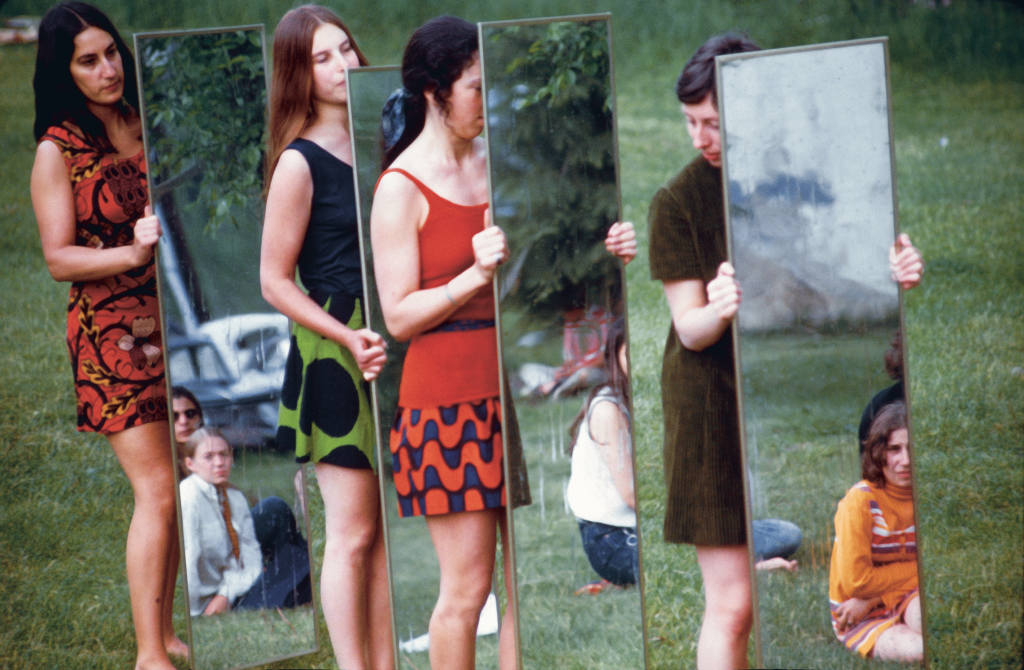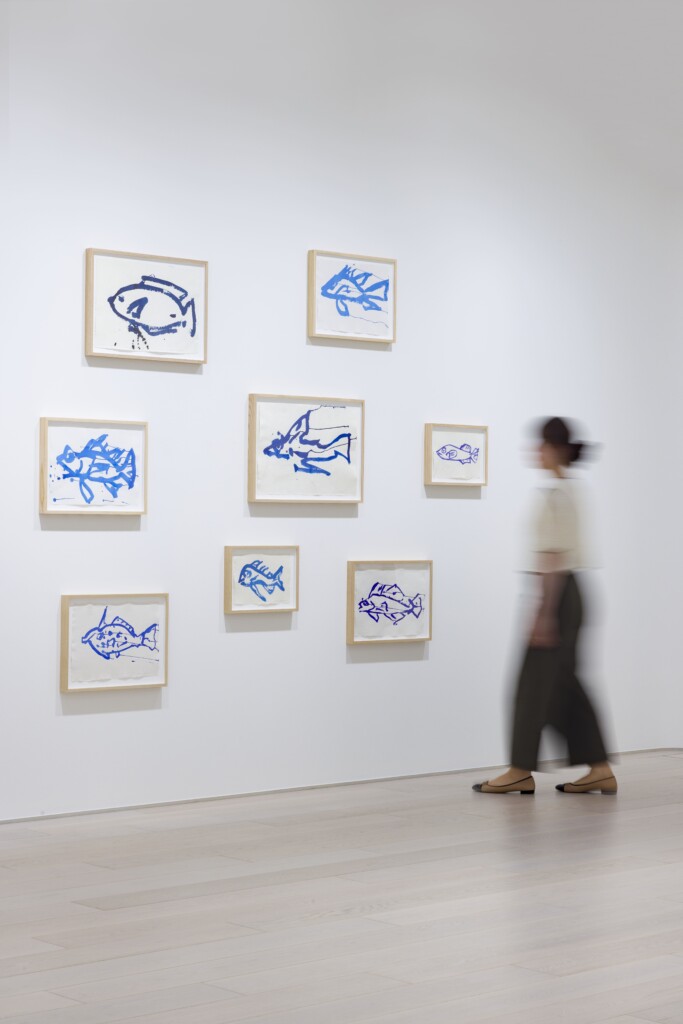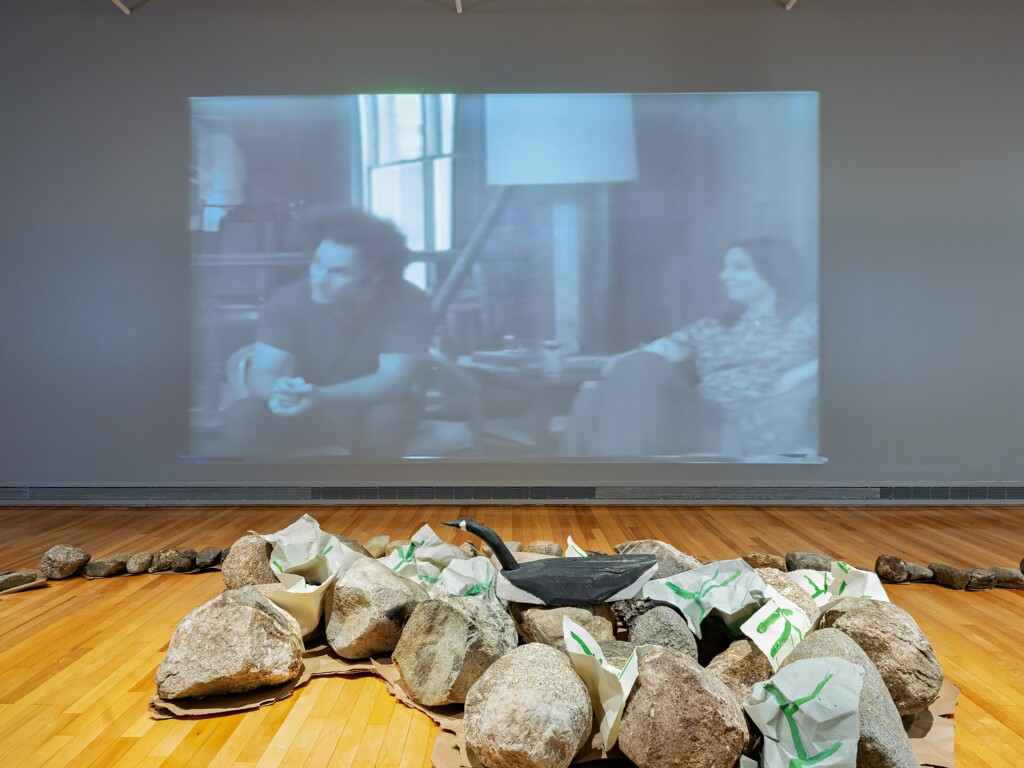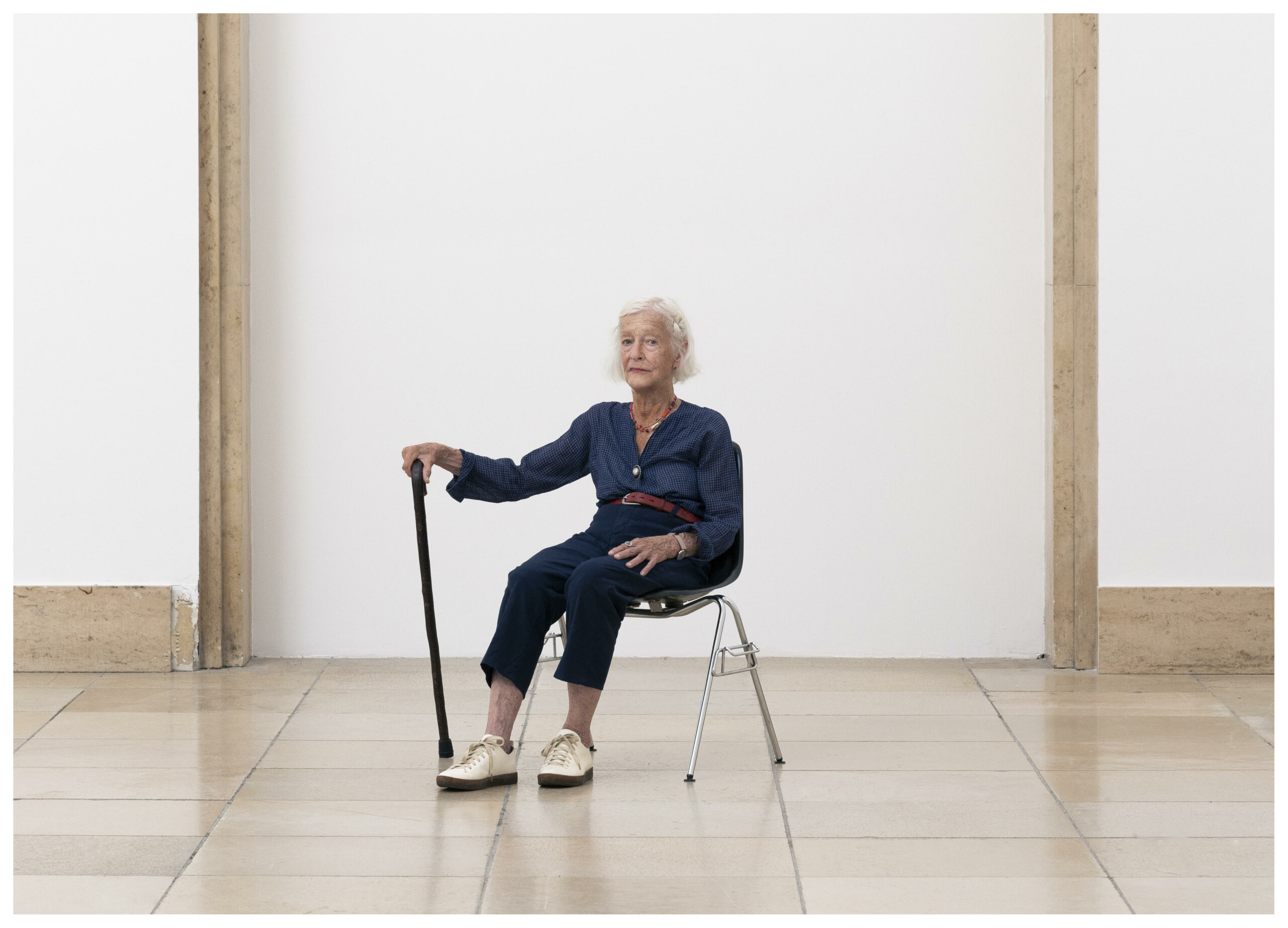Joan Jonas, born in 1936 in New York, has consistently explored performance art and drawing in relation to natural phenomena. Now dividing her time between the United States and Canada, she continues to develop her practice through collaborations with performers and the reactivation of earlier installations in museums and galleries, but also new drawings and new pieces.
Following her major retrospective at the Museum of Modern Art (MoMA), New York, in 2024, Jonas presents a new body of work on view through March 2026 at the Farnsworth Art Museum in Rockland, in collaboration with the Holt/Smithson Foundation. Entitled The Island Project: Point of Departure, the initiative commissions works by artists who have engaged with or been influenced by Nancy Holt (1938–2014) and Robert Smithson (1938–1973), two key figures in the history of Land Art with whom Jonas shared a continuous dialogue on landscape, perception, and temporality.
What are the basis of your works since 1970?
I base my research on perception. How does the audience perceive my work? Since the late 1960s, the mirror has been my basic prop. For the audience, mirrors held by performers reflect the space, the other performers, and the audience. This affects the way the audience perceives the piece. After that was the technology of video, which enabled me to make what I called films, which reflected what I was doing in my studio space with the video monitor. Simultaneously, I started working outdoors and this perspective shifted to distance and how distance alters one’s perception. Since the very beginning, literature has been a large part of my language, including ideas of mythology and the idea of ritual. The writer Borges played a major role in these ideas.

Mirror Piece I, Bard College, 1969. Photo by Joan Jonas
Mirror Piece I & II has been performed in September at Kulturforum Berlin, Neue Nationalgalerie – a reprise of your performance created in 1969 with women wearing mirrors and facing the audience. What emotions does this work trigger today? How does it raise new questions? Is it related to eco-feminism and critical self-awareness?
This was developed and performed in 1969, and it’s partially about self-examination as well as simply the ritual of walking very slowly and carrying around mirrors which reflect everything, including the audience. I do not deal with emotion, and neither do my performers. Instead, what is concentrated on is movement, sound, image and how these
relate to each other or to others. I’m the director and the conceiver, and the performers more or less follow my directions. The piece has remained the same as much as possible since the early 1970s. I’ve watched these reenactments and one thing I noticed was the close relation to ritual and the slow movement of ritual. Very slow. It itself is not eco-feminism and critical self-awareness (maybe in the perception of the audience), but the work is not based on these ideas as such. In a way, it’s very abstract. Female performers carry the mirrors, and the two male performers carry the woman dressed in a kimono. All of this was a reference to gender at the time when I made the piece.
In 1979, you made Hurricane Series. Hurricanes are a phenomenon that is happening more and more in the world. You were prescient that it would become an everyday threat in the world today. Can you explain the context of this work?
The Hurricane Series was a series of lithographs. I chose the title because I liked the abstract symbol signifying a hurricane in depictions of the weather image. That particular series also includes images of the moon and the sun.

Hurricane from Hurricane Series, Aquatint, 1979, Photo by Joan Jonas
Your Reanimation video is a performance featuring a glacier that is melting and animals that you draw on yourself while wearing a mask and white dress. Jason Moran is accompanying you with improvisations. You improvise on stage, as well. Is this work a visual poem about fading nature?
I would put it slightly differently. You could call it a visual poem about the climate, the planet, and the situation of animals and humans in such a changing field. It could be called a visual poem about how climate is affecting nature, but it’s not in any sense about “fading nature.”

Joan Jonas Reanimation – Pirelli HangarBicocca, 2014
Your exhibition at Pace Gallery in Tokyo, curated by your friend Adam Pendelton, has been focusing on the intimacy of your drawing practice. How did you – collaborate? What is your relationship to drawing?
Adam chose the drawings that were in the show from my archives. Drawing is integral to my practice. I draw continuously in relation to context, movement, research, and space. Drawing is a basic activity for me, and drawings create another level of meaning in a work that includes video, movement, and performance.

Joan Jonas drawings at Pace Tokyo, 2025 – Photo by Keizo Kioku
You are currently exhibiting at The Farnsworth Art Museum in Rockland, Maine. What is your connection to Maine, and what was your relationship with Nancy Holt and Robert Smithson?
My connection to Maine is because The Island Project by Robert Smithson and Nancy Holt exists in a small town on the coast of Maine. This island is right off that shore. There is a wooden bird in the show which I found in that town. I often work with found objects and folk art, and it felt very fitting. Robert and Nancy were close friends. I followed their work, especially that of Smithson’s. I decided to depict the island by making a big outline of rocks in the gallery. I included video of Richard Serra and Robert Smithson talking when we were all out in St. Louis, where I was with Richard who was working on his outdoor work there. The only connection to Maine is through these processes.

Joan Jonas installation at Farnsworth Art Museum, 2025 – Photo by David Cloug
How do improvisations allow you to tell stories about nature?
Improvisation has always been part of my work, as it is for many people. It’s how people begin to search for movements and ideas, etc. Nature is one of the many subjects. Improvisation doesn’t inherently link one to a subject like nature. It’s a process.
How does live performance allow you the freedom to convey ecological awareness?
In order to even think about live performance, I first have to explore video and technology in relation to images, and research based on outside sources. So it’s not just live performance. It goes with every subject. “Ecological awareness” is always reached by extensive research and observation concerning what’s going on with the earth and climate. So I use projections and storytelling focusing on certain subjects, such as ocean animals and selective creatures. Particularly in ecological work, I’ve been working with young adults and children as performers. However, they do not participate in the development of content. One of my ideas for having young people perform is that they will inherent this planet when I’m gone, and I want them to have some contact with what is being lost.
Juliette Soulez for Art of Change 21
Cover: Portrait of Joan Jonas by Maximilan Geuter, 2022

